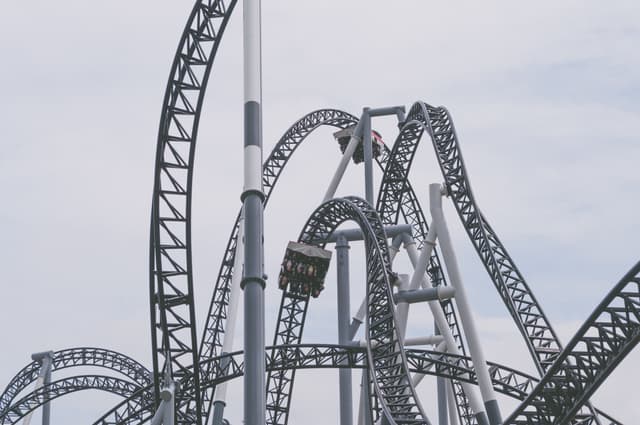Have you ever heard of maladaptation?
Reading time : 6 minutes
Published on : 19/02/2025
Last update : 20/11/2025

Contents
Do you know the concept of "maladaptation"? Here is the definition given by a group of 16 experts who met to discuss about such topic in November 2012:
"Maladaptation is an adaptation process that directly increases vulnerability to climate variability and change and/or undermines current and future adaptation capacities and opportunities."
In other words, it is an adaptation that, while addressing current climate change, actually worsens future climate change. Thus, doing more harm than good.
This concept is particularly relevant in summer when the effects of climate change become painfully clear as wildfires rage across the world and record-breaking heatwaves affect, among other countries, France.
As these impacts become more severe, many feel powerless. For others, with more resources, this is when they start considering adaptation strategies, some harmless but others with serious climate consequences, ultimately making climate injustice worse. Let’s take a closer look.
Keeping homes cool

Beware of air conditioners
Every year, increasingly intense and long heatwaves lead more households to think about installing air conditioning. In 2020, 800,000 air conditioning units were sold in France, a record amount.
There are many types of air conditioners, and their impact depends on:
- Energy consumption: is massive and peaks in summer when renewable energy production (particularly from hydropower) slows down.
- Refrigerant fluids consumption: these fluids which absorb heat are used in all cooling systems (from refrigerators to air conditioners) can leak during use and disposal. Some of these fluids have a global warming potential thousands of times higher than CO2, contributing more to the device’s footprint than its energy consumption.
The carbon footprint of an air conditioner is 350 kg CO2e per unit over its 6-year lifespan (around 60 kg per year). For reference, reaching carbon neutrality by 2050 requires individual footprints to stay below 2 tons per person per year.
If improving your home’s comfort is not enough to maintain an indoor temperature around 25°C during heatwaves, or if air conditioning is necessary for health reasons, here are some ways to reduce climate impact:
- Set a reasonable temperature: just as heating should not be set to 25°C in winter, air conditioning should not be set to 20°C in summer.
- Have your unit serviced annually by a professional to avoid refrigerant leaks.
*For more information, see ADEME's guide: Air Conditioning: towards a more responsible use to limit environmental impact.*
Sustainable alternatives
There are many ways to keep your home cool, depending on whether you own your home, the time available, and your budget.
The most effective solutions involve improving the building itself: better insulation, installing shutters, adding vegetation around the home or creating shade. These require planning and, in many cases, homeownership. They may be costly, but they are highly effective and also significantly reduce heating expenses in winter. Some government incentives are available for such work.
Smaller, more affordable solutions include installing fans (especially ceiling fans).
Then there are small habits to preserve indoor coolness during heatwaves: keeping shutters closed when the sun is strong, closing windows when outdoor temperatures exceed indoor temperatures, opening them wide to create airflow when the opposite is true, and minimizing the use of heat-generating electrical appliances.
*Explore all these strategies in ADEME's guide: Heatwaves: how to keep your house cool (ADEME).*
Keeping yourself cool

Ah, summer is much more bearable when you can take a swim to cool off!
Maladaptation: building a private pool
In 2021, France over three million private swimming pools were built (about half in-ground and half above-ground). Private pools have a significant carbon footprint (see details here), but their environmental impact goes beyond CO2 emissions: they also increase pressure on water resources.
Sustainable alternatives
Instead of installing a private pool, consider:
- Public swimming pools
- Shared pools
- Nearby natural water sources such as lakes, rivers, or beaches (win bonus points for getting there by walking, bike, or public transport!)
Finding a cooler holiday destination
Summers are getting hotter in France, and naturally, many travelers seek cooler destinations for their summer break.
Maladaptation: traveling (too) far
Some holidaymakers now travel far distances seeking cooler weather. For example, some escape to the southern hemisphere’s winter in Réunion Island to avoid heatwaves in France.
However, an average long-haul round-trip flight alone represents an entire year’s worth of the 2-ton CO2e footprint needed to reach carbon neutrality (see aviation impact data). Limiting air travel is crucial to reduce our impact on climate change.
Low-carbon alternatives
Luckily, France is one of the world's most diverse travel destinations! When looking for cooler weather, you can:
- Stay in the countryside instead of cities.
- Head to rivers, lakes, or the seaside.
- Escape to the mountains for fresher air.
Another advantage? Most of Europe is connected by train! Have you heard of Interrail? It’s a great way to explore one or more countries by train, perhaps an opportunity to head north?
Are you a member of a local government? Find climate-friendly solutions for your region here.

Julie,
For the past ten years Julie has been committed to the transition of our society. She joined the Nos Gestes Climat team in 2023 as a carbon specialist and is responsible for the clarity of the calculator and published content.



